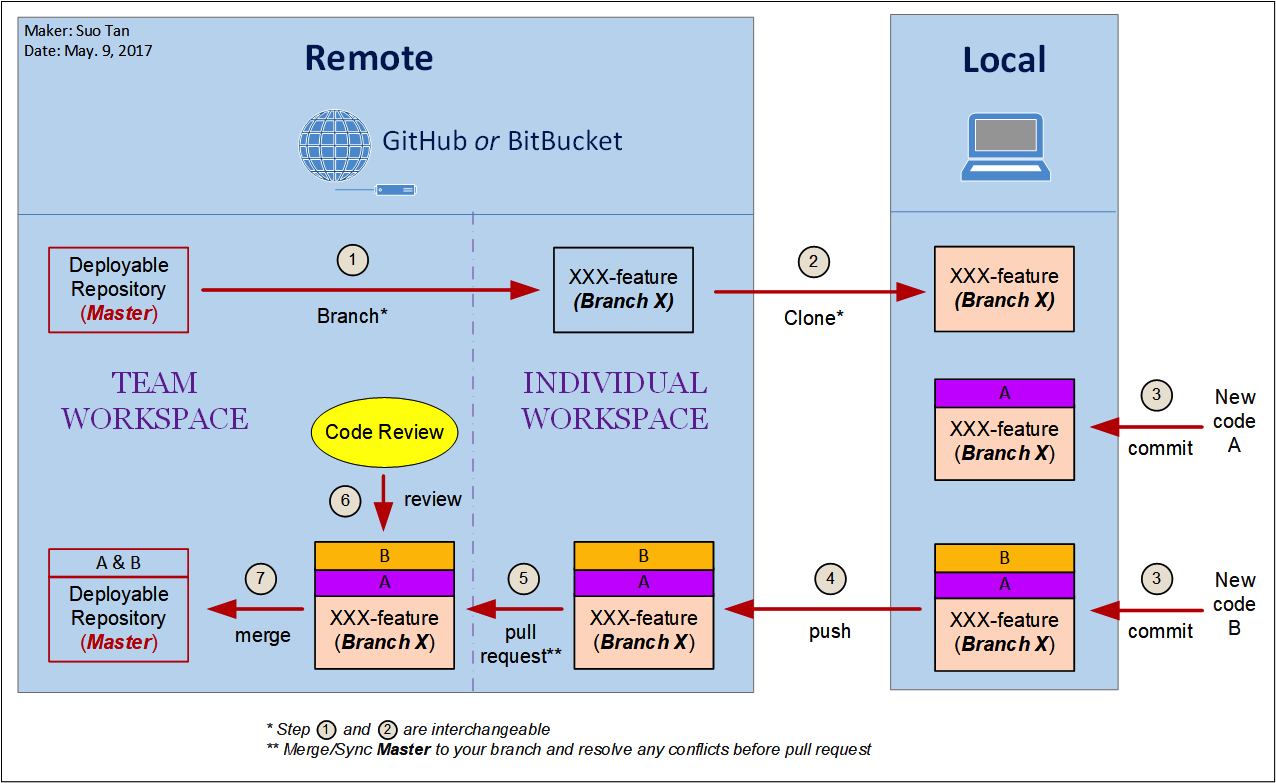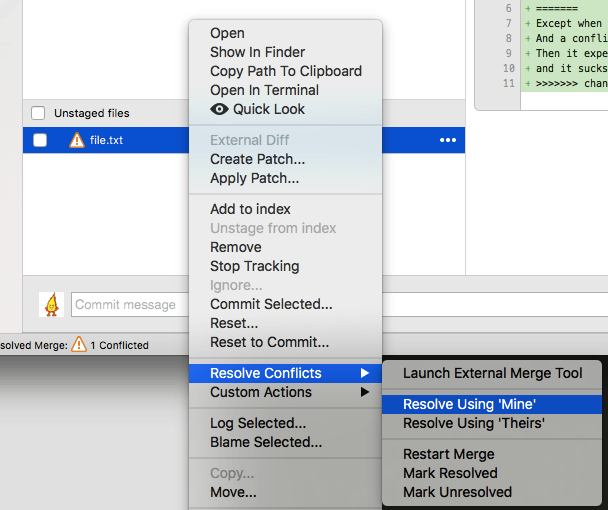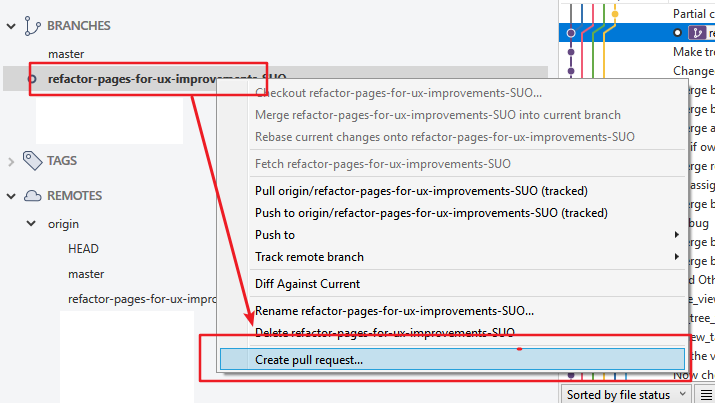The most widely used Git workflow was introduced by Vincent Driessen – A successful Git branching model. But it is complicated for startups. I personally like the GitHub workflow proposed by Scott Chacon, due to its simplicity. The core concepts are:
- Anything in the
masterbranch is deployable - To work on something new, create a descriptively named branch off of
master(ie:new-oauth2-scopes) - Commit to that branch locally and regularly push your work to the same named branch on the server
- When you need feedback or help, or you think the branch is ready for merging, open a
pull request - After someone else has reviewed and signed off on the feature, you can merge it into
master - Once it is merged and pushed to
master, you can and should deploy immediately
The process is visually represented below:

If you are not used to command line or bash commands for Git, two GUI software are available for free: SourceTree from Atlassian, and GitHub Desktop from GitHub. Both can be used for version management on either BitBucket or GitHub. I personally like the former. The following shows a convenient way for quick conflict resolving in SourceTree.
 .
.
You can create a pull request on BitBucket. Or, create one with SourceTree:
- Right click your branch and choose Create pull request... This will redirect to the repository page on BitBucket.
 .
.
- Double check the source branch and target branch on the pull request page. Fill the information, choose a reviewer or two for code review, and check the
Close branchcheckbox if your branch is temporary or end of the lifecycle.
The overall experience of the GitHub workflow is simple and intuitive. However, in practice, I personally will create two separate branches: release/test and release/prod for test sever and production server respectively. The release/prod will be merged back to master once deployed and is not being rolled back. Then, a version tag is assigned. In this way, master branch alway contains tagged versions which have been deployed.
Where, this is my personal thought. It might not fit a company’s needs.
